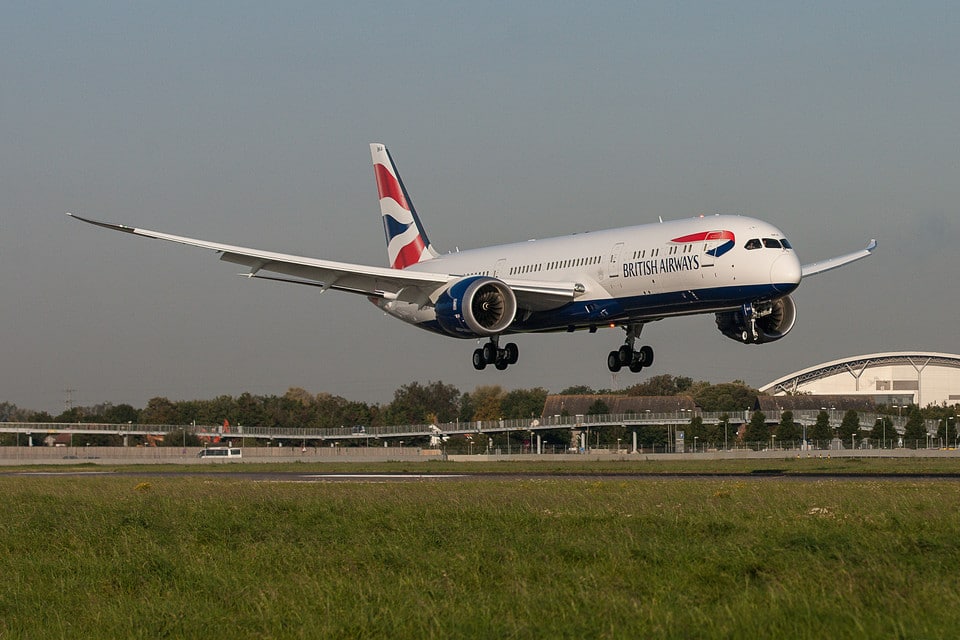Aerospace
British Airways takes next step towards developing sustainable aviation fuel
British Airways takes next step towards developing sustainable aviation fuel

An agreement between British Airways, LanzaJet, and Nova Pangaea Technologies will expedite the groundbreaking Project Speedbird initiative to create affordable sustainable aviation fuel (SAF) for use in the UK’s commercial aviation sector.
Qantas and Airbus Partnership for the biofuel industry.(Opens in a new browser tab)
In accordance with the agreement, British Airways’ parent company, IAG, will contribute to the project in order to support the next stage of research and development efforts aimed at decarbonizing the aviation sector.
Project Speedbird has now submitted an application for a grant from the DfT’s Advanced Fuels Fund, which will be essential to the project’s continued development as the DfT works to implement its recently unveiled Jet Zero strategy, which includes enforcing a SAF mandate that will go into effect in 2025 and mandate that at least 10% of UK jet fuel be SAF by 2030.
Project Speedbird would convert 102 million litres of SAF annually from sustainable agricultural and wood waste. The facility, which is slated to be built in North East England, could start construction as early as 2023, and production of SAF is anticipated to begin in 2026. In order to power some of its flights, British Airways plans to offtake all SAF created through Project Speedbird. On a net lifecycle basis, the SAF generated would cut CO2 emissions by 230,000 tonnes annually.
Utilizing a combination of cutting-edge technologies, the SAF will be created using Nova Pangaea’s REFNOVA® process for producing bioethanol and biochar from agricultural and wood waste. The bioethanol is then transformed using LanzaJet’s unique and patented alcohol-to-jet (ATJ) technology, the first of its kind in the world, to create SAF and renewable diesel.
In addition to creating hundreds of jobs and supply chain opportunities in the North East of England, Project Speedbird would significantly increase skilled employment there and contribute to the UK’s overall economic growth by promoting investments in green technologies. Furthermore, the facility would increase domestic production, enhancing the UK’s energy security.

Aerospace
Boeing Transfers Rocket Stage to NASA, Paving Way for Human Moon Mission

Boeing has achieved a significant milestone by providing NASA with the second core stage of the Space Launch System (SLS) rocket.
This crucial component, crafted at NASA’s Michoud Assembly Facility (MAF), is set to propel the Artemis II crew into lunar orbit, marking humanity’s return to deep space after a 50-year hiatus.
The monumental Boeing-built rocket stage, the largest element of the Artemis II mission, will embark on a journey aboard the Pegasus barge, traveling 900 miles to NASA’s Kennedy Space Center.
Comparison of two legendary aircraft B777x vs B747 aircraft:Click here
Upon arrival, it will be meticulously integrated with other essential Artemis II components, including the upper stage, solid rocket boosters, and NASA’s Orion spacecraft within the iconic Vehicle Assembly Building. This intricate integration process is a vital step toward the eagerly anticipated Artemis II launch, slated for 2025.
“Boeing-built products helped land humankind on the moon in 1969, and we’re proud to continue that legacy through the Artemis generation,” remarked Dave Dutcher, vice president and program manager for Boeing’s SLS program. “Together, with NASA and our industry partners and suppliers, we are building the world’s most capable rocket and paving the way to deep space through America’s rocket factory in New Orleans.”
NASA, Lockheed Martin Reveal X-59 Quiet Supersonic Aircraft:Click here
The delivery of Core Stage 2 marks a significant achievement in the evolution of the SLS rocket. Towering over 200 feet and powered by four RS-25 engines, this core stage, coupled with two solid-fueled booster rockets, will generate a staggering 8.8 million pounds of thrust. This immense power is crucial to launching Artemis II and future missions into the vast expanse of space.
The SLS rocket stands unparalleled in its capability to transport both crew and substantial cargo to the moon and beyond in a single launch. Its extraordinary capacity will facilitate the delivery of human-rated spacecraft, habitats, and scientific missions to destinations including the moon and Mars, ushering in a new era of space exploration.
-

 Travel1 week ago
Travel1 week agoAir India to Expand US Operations with Three New Routes After a Decade
-

 Travel2 weeks ago
Travel2 weeks agoWhy We Should Avoid These Stamps in a Passport
-

 Airlines1 month ago
Airlines1 month agoInvestigations Reveal Fake Chinese Titanium in Boeing and Airbus Jets
-

 Tech4 weeks ago
Tech4 weeks agoChina’s CATL Plans 1,800-Mile Electric Plane Launch by 2027
-

 Airport3 days ago
Airport3 days agoTop 10 Largest Airports in the World by Size
-

 Aerospace4 weeks ago
Aerospace4 weeks agoChina’s Fighter Jets Turn Wings into Autonomous Drones
-

 Airlines4 days ago
Airlines4 days agoAir India Rolls Out A350s for Delhi-New York JFK and Newark Routes
-

 Defence3 weeks ago
Defence3 weeks agoBoeing Enhances Chinook with New Engines and Block II Upgrades at $96 Million







